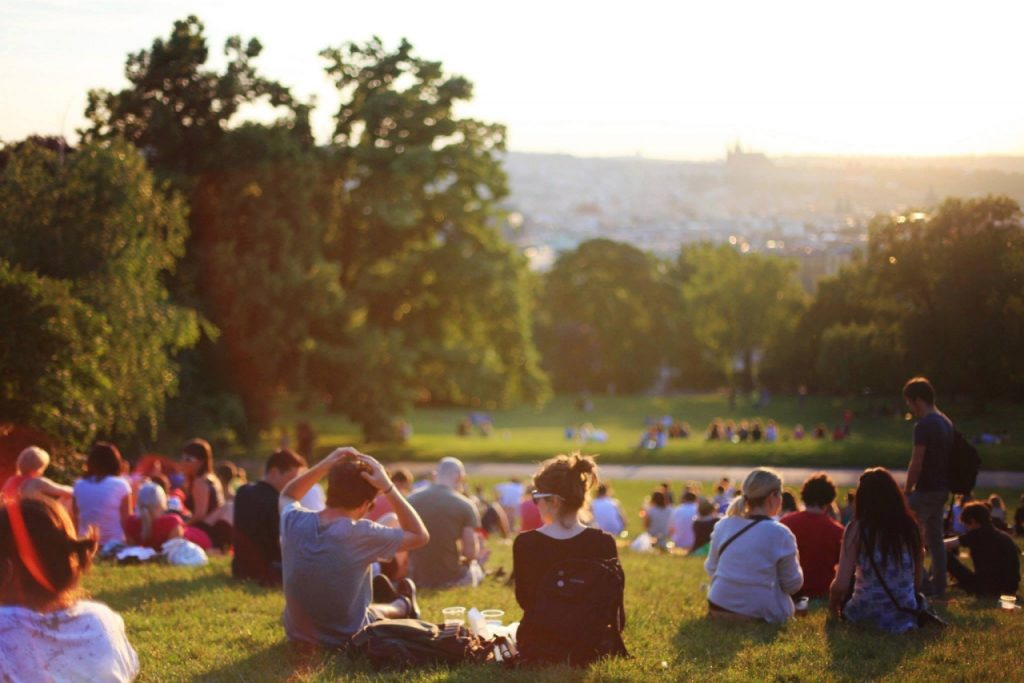The University of Helsinki launched a research theme regarding urban sustainability in May 2020. The theme is produced in cooperation by the two institutes Helsinki Institute of Sustainability Science (HELSUS) and Helsinki Institute of Urban and Regional Studies (Urbaria) and it includes four overlapping subthemes.
Urban sustainability webinar
The first subtheme of the urban sustainability theme are equitable, engaged and empowered communities with knowledge-creation processes development to understand multi-level governance processes and issues of social justice, power and inclusion across sectors and scientific disciplines. The smart nature-based solutions agendas have been presented as critical to the achievement of climate-neutral cities which is why the second subtheme is smart, green and climate neutral cities. The third theme emphasizes regenerative and prosperous urban economies with new economic models and the last subtheme is connected, healthy and climate friendly lifestyles that also support human well-being and social connectivity.
Following the launch, a webinar about Urban Sustainability was organized on 26.5.2020. The Urban Sustainability webinar with the theme “Nature-based solutions in cities” showcased how cities globally are encouraging transformation toward low impact and sustainable lifestyles in the face of social shocks and rapid environmental change. Altogether four presentations were heard from Professor Christopher Raymond (University of Helsinki), Deputy Head Christos Fragakis (Sustainable management of natural resources unit, European Commission), Mayor Pekka Timonen (City of Lahti) and Academy Research Fellow Riikka Puhakka (University of Helsinki).
The event started with Vice-Rector Tom Böhling’s opening words in which he highlighted some of the sustainability themes at the University of Helsinki. There are four strategic choices in the Helsinki University Strategic Plan 2021-2030 and one of the four choices is that our University is a leader in responsibility and sustainability especially by research and education. University of Helsinki will for example become carbon neutral during this period. The actions taken will have an effect also in education. The themes of sustainability will be integrated into all degree programmes. “We are going to educate the future experts”, says Böhling and mentions the sustainability course meant for all students which is being developed at the moment.
Properly designed nature-based solutions benefit all
After Vice-Rector Tom Böhling’s opening words Professor Christopher Raymond started the presentations with the topic ‘Creating livable and resilient cities through nature-based solutions: Opportunities for recoupling human and natural systems in cities across the world’. “Cities may not be the producers of food, but they have a massive impact on how we live and on our environmental footprint”, Raymond says. The nature-based solutions also benefit the economy and societies when they are designed properly.
Many examples of nature-based solutions are familiar like traditional green areas or green areas built to serve as civic meeting points. They can also be more creative with social cohesion like wildflower nurseries or showcases of art and nature like a disused zoo was turned into an art exhibition in Genk in Belgium. Nature-based solutions not only provide conservation and restoration of biodiversity but a huge amount of other services as well. For example, they can provide solutions for coastal protection or flood control, by providing better air quality or providing services like erosion management and pollution. If the urban areas are planned with a holistic approach and societies are managed through nature, the nature-based solutions can provide urban social sustainability and economic growth. These solutions also support climate change mitigation and adaptation.

Cities often lead the way in which nature-based solutions and the decisions made can influence the economy and the investments that will be made. For example, New York City passed a bill requiring Green Roofs on new buildings. This had a lot of effects on business since there is now a legal mandate to include nature-based solutions in everyday activities.
Cities are social-ecological-technological systems (SETS) with embedded social structures, institutions, and drivers and dynamic feedbacks between their social, ecological and infrastructural components. These complex interactions between the physical and social world need to be taken into account when urban areas are designed.
Europe as the first climate neutral continent
Christos Fragakis, Deputy Head of Sustainable management of natural resources unit in the European Commission, talked about sustainable and climate-neutral cities in the EU and the program called Horizon Europe. Sustainable urbanization is a global challenge and includes several dimensions like climate change, pollution and environmental degradation. At the same time cities work as hubs for sustainable innovations.
The Horizon 2020 program invests altogether 3,1 billion euros on urban research and innovations (R & I) across different societal challenges like health, degradation and climate change. It covers over 600 projects and over 120 cities in EU. Horizon Europe is a planned 7-year research initiative for the years 2021-2027 meant to succeed the current Horizon 2020 program. One part of the program is the aim to support cities in their transition towards sustainability and climate neutrality in line with the ambition of the EU Green Deal to have “Europe as first climate neutral continent 2050”.
Horizon Europe aims to enhance capacity of urban actors like cities, stakeholders, businesses and societal actors to co-design and roll-out transformative transition towards sustainable development. The focus on three sectors and the interrelationships among them: energy transition, mobility transitions and urban greening. Fragakis mentioned an ambitious goal which is part of the program. It’s the mission to have 100 climate neutral cities in Europe by 2030. Only time will tell if this goal is possible to achieve.
Urban nature in our everyday life
The Mayor of Lahti, Pekka Timonen, discussed the transformation toward sustainable lifestyles in Lahti and about Lahti as European Green Capital 2021. Lahti is a mid-sized European city and majority of Europeans lives in mid-sized cities. Lahti has been an industrial city until the beginning of the 1990s and been after this very active in building the sustainable urban model. It started with the lake in Lahti which was the dirtiest lake in Finland 35 years ago. Now it is possible to swim in the lake, and green growth with new jobs is getting more and more weight in the city strategy. Lahti has also launched a personal carbon trading on mobility emissions which is the first city wide pilot in the world.
Academy research fellow Riikka Puhakka from the University of Helsinki talked about the importance of urban green areas for children and youth. It is well known that nature and spending time in nature is related positively to psychological and physical health. One of Puhakka’s studies were made in Lahti on 15-16 years old youth. The results show that the urban nature is important for the youth. It is often said that friends are important for youth but being alone in the nature helps breaking away from the everyday life and releases stress. Both are needed.
Urban nature and nature-based solutions in cities are needed in these times. The urban sustainability research theme brings a needed addition to the University of Helsinki and helps with creating more collaboration between researchers. Hopefully we will be hearing more about this new research theme!
Heidi Blom
Heidi Blom is a Master’s student at the University of Helsinki, majoring in environmental sciences. Heidi has been working as a communications trainee at HELSUS during spring 2020.
Photos by 贝莉儿 DANIST on Unsplash and Leah Kelley from Pexels

